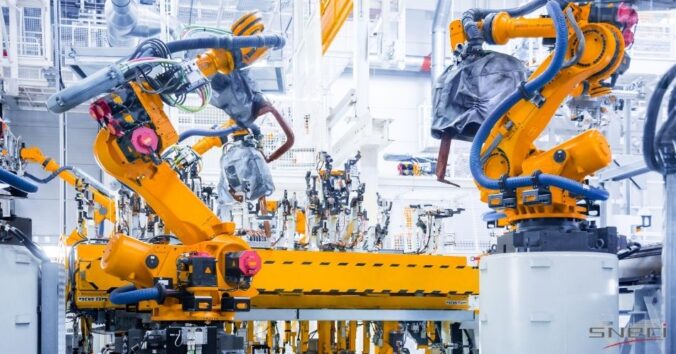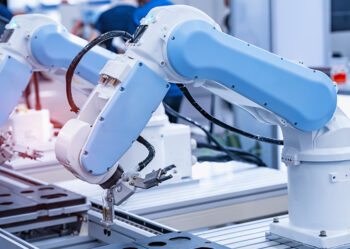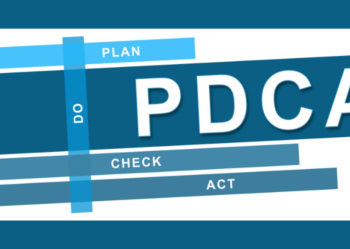Jidoka : one of the two pillars of TPS for industrial performance.

We previously spoke to you about the different tools linked to industrial performance and more particularly to lean manufacturing. 6 families and 17 tools to reach the 5 zero: Zero delay, Zero stock, Zero paper, Zero defect and Zero breakdown thanks to the TPS method (Toyota Production System) allowing Japanese productivity and quality to supplant North American factories.
This is how “Lean Manufacturing” became a method of organization and optimization of industrial performance that aims to better meet customer requirements in terms of cost-quality-delay.
Among these tools, we have already presented you the 5S worksite, and today we are going to come back to Jidoka, one of the 2 pillars of TPS in Lean Manufacturing.
Jidoka Definition
Jidoka is often also called “autonomation” since it represents the contraction of “autonomy” and “automation”.
The principle of Jidoka is to stop work as soon as a problem occurs in order to avoid the production of defective elements. This approach is based on the detection of anomalies within the processes themselves, thus allowing the quality to be built into the product.
A little historical reminder: until the beginning of the 1900s and the standardization according to Ford, each machine had an operator in charge of monitoring its proper functioning. This could turn out to be a totally useless mission as long as no problem occurred and the operator remained inactive to monitor a machine.
However, Sakichi Toyoda, founder of the Toyada textile company, developed a device that would automatically stop his weaving shuttles without the supervision of an operator if a thread broke. A real revolution for the time, the automation of the detection!
Thus, as soon as a shuttle problem appeared, an innovative mechanism made it possible to detect it without the intervention of an operator specifically dedicated to the monitoring of the machines – and this is how the Jidoka made its appearance as a tool allowing the autonomous detection of anomalies in the production process.
Let’s clarify the notion of autonomation from the outset, Jidoka is not intended to eliminate jobs, on the contrary, it is intended to increase the company’s profitability by assigning operators to other tasks with more added value, thus improving the quality of work while helping to increase the operators’ skills.
Then, always in this optics of continuous improvement within the framework of the TPS (Lean Manufacturing) was developed a modernized version of Jidoka.
How Jidoka works
The implementation of Jidoka allows to detect defects as soon as possible and not to let them propagate in the production chain.
Indeed, the later a defect is detected, the more costly it becomes, especially in terms of correction, but also in terms of delays, customer impact, waste…
The Jidoka approach has 2 fundamental axes:
The first axis consists in solving the quality problems as soon as possible
The general principle of Jidoka is not to let non-conformities propagate along the production line considering that their resolution is all the more costly when it occurs after the problem has appeared.
To do this, the implementation of an Andon system is necessary and consists in automatically triggering (or by action of an operator) a light or sound signal as soon as a non-conformity is noticed on the production line.
The Andon is a visual (and sometimes sound) alert system that can be inserted throughout the production or supply chain of a factory.
It is part of the visual management tools of production. The greatest interest of this tool is the management of incidents that may occur within the plant.
It is also possible to temporarily stop the production line so that countermeasures can be put in place to solve the incident and the related quality problem. To do this, different methods can be used such as : QRQC, QQOQCP, 5P, 5M.
The second axis consists in going back or even removing the non-quality at the source
In this second axis, it is a question of putting in place measures to reduce the risk of non-quality occurrences, which can range from the development of standards or training by specific point (one point lesson) to the establishment of FMEA (product, process, or means of production) through the development of anti-error / deception systems such as the Poka Yoke.
The 5S method, whose objective is first to improve the performance of the workstation, also participates in the improvement of quality.
The different steps of the Jidoka are the following:
1 – Detect: an operator or a machine detects a problem and reports it
2 – Alert: the production line is slowed down (or stopped if necessary)
3 – Secure: a supervisor comes to observe and repair the problem
4 – Analyze and remedy: the problem is recorded, analyzed, solved and the line resumes its normal rhythm
5 – Improve and share: production optimization tracks are defined
The many advantages of Jidoka
The application of Jidoka meets many challenges. It allows to :
- Make dysfunctions visible in order to eliminate them.
- Guarantee quality.
- Prevent waste.
- To make savings.
- Professionalize operators and support functions.
This tool aims at “zero defects” and allows the implementation of the necessary conditions to reach a risk of non-conformity almost null.
With Jidoka, anomalies cannot reach the customer because they are detected upstream and thus do not have the possibility of reaching the end of production. Non-quality is eliminated at the source, which is a significant advantage in terms of operational cost control, compliance and safety.
Indeed, Jidoka allows to reduce considerably the “waste” since a part that would have been identified as defective at the end of the line and therefore would have required as much energy to produce as a compliant part and would not be sold will be stopped upstream thus avoiding any additional cost.
The replacement or reprocessing of a defective part generates non-negligible additional costs: production costs, storage costs, transport costs… that Jidoka allows to avoid.
SNECI and JIDOKA support
70 years of operational excellence in the automotive industry gives SNECI an agile expertise in the continuous improvement of industrial performance considering the structural, economic and environmental changes that manufacturers have gone through.
Thanks to our more than 450 experts throughout the world, we support all our customers, whether they are manufacturers or suppliers, in their efforts to optimize industrial processes and continuous improvement through customized support.
Our 5 areas of industrial expertise allow us to work with our customers on various points:
- Management of industrial projects from A to Z
- Assessments and audits of processes with our expert quality engineers
- A Lean Manufacturing approach through the use of different tools such as Monozukuri, VSM, TPS, 5S site method… in order to improve costs and quality
- Support and logistical assistance in order to reduce delays
- The increase in competence of the people with training
- And sorting & reworking
Why choose SNECI to help you improve your performance?
- SNECI is an expert in improving industrial and commercial performance internationally
- SNECI is able to rely on its international network to enable SMEs to develop not only in France but also internationally
- SNECI has already advised more than a hundred equipment manufacturers of all sizes and all over the world on their strategic and commercial development, both to develop new products and to win new customers (manufacturers or equipment manufacturers).
- SNECI has conducted more than 1000 supplier assessments worldwide.
- SNECI is certified by Stellantis to perform supplier entrance panel audits (NSA), worldwide.
- SNECI has developed its own reference system, the ISA, which covers the different aspects of a company, namely R&D Organization, Sustainable Development, Quality & Manufacturing, Supply Chain Management and Finance & Administration.
- SNECI accompanies its customers towards the green mobility (electric vehicles, batteries…) of tomorrow by supporting innovation but also by reinforcing competitiveness both in French and foreign industries.
If you want our teams to accompany you on the subject, send an email to Laura (who commits to answer you within 24 hours) laura@sneci.com or contact us directly on our website.






